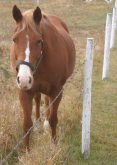CAMROSE, Alta. — Bison evolved while grazing vast grasslands, and that evolution has allowed it to thrive better than cattle on mature, low-quality grasses, said a livestock nutritionist.
“Mature grasses in The Prairies are lower in protein and energy and the bison have evolved to use lower quality,” said Annette Suominen.
“They are the master of the grazing,” she told the Alberta Bison Producers conference.
During winter, bison are able to slow their metabolisms to reduce their feed requirements to maintain or lose weight. During winter, with reduced metabolism, an adult bison can lose 10 to 15 percent of its body weight.
Read Also

Beef check-off collection system aligns across the country
A single and aligned check-off collection system based on where producers live makes the system equal said Chad Ross, Saskatchewan Cattle Association chair.
In spring and summer as the days lengthen, a bison’s metabolism increases and allows for increased weight and ensures fetal growth.
Because of these unique and changing nutrition requirements, the quality of forage fed to the bison will drive the profitability of the farm, said Suominen, of Jones Creek Livestock Consulting.
“The better the forages, the less supplementation necessarily. You may not need a supplement if you have good forages. It is cheaper to grow good forage than add supplement,” she told the group of producers.
Healthy soils, rich in nutrients, will also reduce the need for supplements.
“If forage is low in energy, animals need to eat more of it to fill its requirement for energy and may have to be supplemented.”
Suominen said it’s important to watch bison and listen to what they’re saying about nutritional requirements. Don’t rely only on feed analysis reports. The animals should be only eating for three to five hours a day. The rest of the time they should be lying down and ruminating and absorbing the nutrients from the feed.
The length of time feed goes in one end and out the other is longer in bison than cattle. It takes about 78.8 hours for the feed to go in one end and out the other. Cattle retain their feed for 68.7 hours. This extra time allows bison to absorb more nutrients from lower-quality feed.
Bison saliva is 30 percent higher in nitrogen than that of cattle, enabling bison to recycle urea in feed more easily than cattle.
The needs of bison are different when placed in feedlots, Suominen said. Stress is increased, especially with space constraints. Bison require about twice as much bunk space as cattle and producers must ensure adequate forages and minerals.
“The higher the stress of the animals, the higher the need for trace minerals and vitamins to keep their immune system, endocrine system and gastrointestinal tract going.”
While snow provides adequate water on pasture, in the feedlot, bison need five to 15 gallons of water a day and easy access.

















